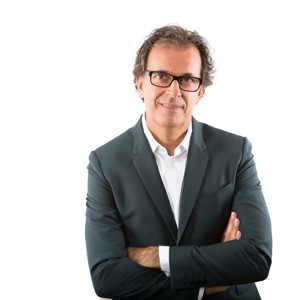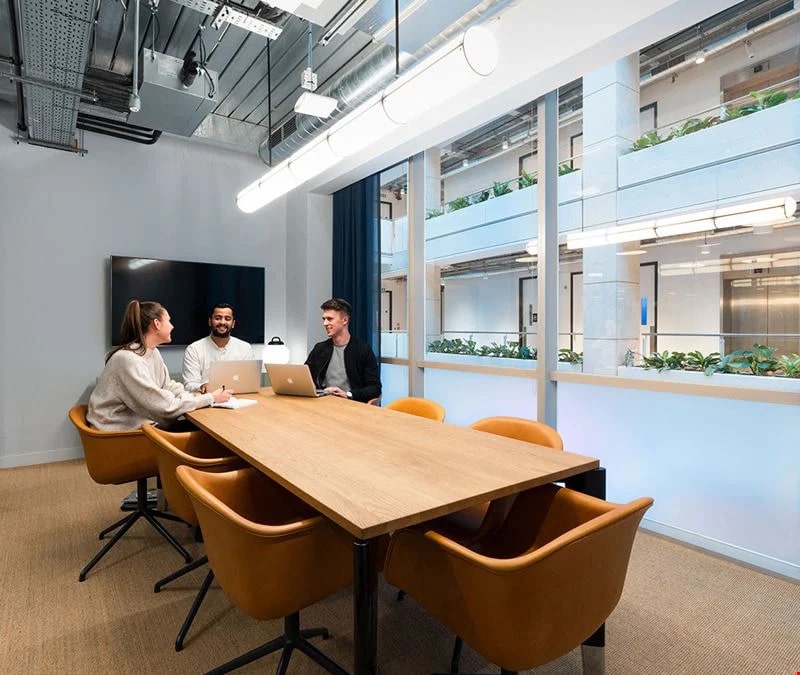In Conversation with Neil Usher
Neil Usher is one of the most respected, and outspoken, commentators on the workplace sector. Bringing to bear more than 25 years in the industry as a leader across property, workplace and change, he has worked for blue chip giants such as Sky, Rio Tinto and Warner Bros. In his regular appearances at industry events across the world and his influential online commentary, workessence.com Neil has addressed the need for a more flexible approach to workplace design, one that promotes both the needs of the individual and the aims of the organisation therefore reconciling the inevitable contradiction of office design.
In the last year, Neil has published his very well received book ‘The Elemental Workplace’, in which he set outs his manifesto to break down the creation of workplace into its essential elements and demystify the subject. Given the mandate of this book and also Neil’s reputation for plain-speaking, Instant has invited him to give his views on some of the issues impacting flexible workspace.
As well as his work as an author, blogger and speaker on the workplace, Neil is also an Executive Consultant at Unispace www.unispace.com . Neil works with the Unispace team across the EMEA region, using his extensive occupier experience to develop corporate property, workplace and change strategies for global occupiers.
Is the growth in demand for flex space a sustainable trend…will it become the new normal and flex goes fully mainstream? And what does “mainstream” in this context actually mean?
I think flex will form part of an overall strategy – along with a core space. It is actually what corporate real estate professionals have been demanding for decades – a combination of the certainty afforded by a core leased or owned facility, expressive of the brand of the organisation, and the ready availability of high-performing and engaging flexible space located nearby, as and when needed.
Is the growth of flexible and serviced offices a manifestation of the “subscription economy”? And, if so, does it have the potential to irrevocably change the market (as we are seeing in the media, retail and travel sectors)?
The model has been with us for many years, but the available product has been limited in appeal and expensive. It is true for SMEs that the principles of collaborative consumption have made flex workspace an easier ‘sell’ but it is also true that the lack of movement on the part of landlords and developers in this direction created the need that was fulfilled by new entrants. The market has been created by a number of trends aligning.
Will an office really need to look like an office in 10 years’ time? Co-working spaces are integrating more and more design elements from hotels or other more lifestyle-orientated design. Do we really need the desk and chair set-up in its current form?
The desk is the tardigrade of the workplace – its survived for thousands of years. It works. Most organisations still treat the desk as the primary unit of workspace. The recent re-balancing of our approach to reflect the important of quiet, focussed work also stresses the need for this survivor.
Both landlords and FMs are now being asked to “curate” spaces that provide an experience to those who work within them – are either party equipped with the requisite experience to undertake this new element of their role?
Space has always provided an experience, we just now talk of it as such. There is a distinct difference between curation and aggregation. We are familiar with “content” (the furniture, fixtures & equipment – FF&E) and “aggregation” (sourcing it, and then putting it all into the space available – sometimes with thought applied, sometimes without), but not so much about “curation” (understanding it, ascribing meaning to its functionality, making it all work in a space individually and collectively, now and over time).
The curator needs to understand the occupant, but also the content – design intent and ethos, historical development, purpose, possibilities and limitations. They need not only to be able to array the content as the occupant requires at present, or in a way that may lead them to opportunities, but be wired to constant feedback about performance and the relationship of the items to one another, and to the functionality required.
It is a deeper relationship and understanding that that we are accustomed to, one requiring a far higher level of listening, observation and interaction, an appreciation of the context and journey, and an ability to weave it all together to enable others to understand and learn from it.
For the curator, to make a valued contribution they need to be able to change, adapt and mould the space, and to tell the story of the space for others to learn from. It is an evolution of the role and the skills required –designer, commissioner, interpreter and manager – combined, extended and enriched.
So, are landlords and FMs sufficiently skilled and experienced to curate? It is doubtful at present – but it is not beyond the bounds to develop an awareness of what curation is, and how to curate. As an industry we all need to understand what these terms mean before we use them as though we do.
As the role of the workplace expert evolves beyond FM, how will the growth of flex space impact the "Head of RE" in the future and their department?
Workplace and FM are both components of what we usually call ‘Corporate Real Estate’ and represent phases of the property life cycle. The workplace expert role has been clearly established for many years, and it is now up to FM to broaden its knowledge and experience in this area and in other aspects of real estate such as strategy and transaction management.
At the same time the boundaries between many support functions – including real estate and workplace – are blurring.
Smaller organisations can rarely justify a CRE role and so this question really applies to larger organisations. For them, the ability to manage a ‘core and flex’ approach will be vital. This involves retaining and developing existing skills, while developing new: but any CRE professional who hasn’t been doing that all their career will find the emergent world somewhat alien.
As the amount of “Space as a Service” increases, how will the conventional real estate market respond? Is the future growth market really about the supply chain and changing the way we buy services? How far can an outsourced model go in this area of the market?
The future for flexible space is enterprise – large scale occupiers. The SME market has been well and truly tapped. The struggle for enterprise clients will be between differentiated and homogenised product. While the latter can be delivered at speed and scale, by virtue of this it can only offer limited tailoring or personality. The workplace is part of an organisation’s culture and not external to it, and so the need for expression of its DNA will not diminish.
There is still an opportunity for the conventional market to offer something different, but the detachment that characterised its approach for many decades has to be jettisoned. It is now over to the conventional market to be the challenger. It’s going to have to demonstrate a dexterity we haven’t seen from it yet of it wants to survive.
What do you think is wrong with the current design approach to flex space and co-working? And – based on the growth of flex spaces - they must be doing something right, so what are they getting right?
Everything in workplace has to exist in balance. The design focus in flex spaces has tended toward open, collaborative and social spaces, borrowing influences from domestic and leisure environments to create spaces that are engaging and inspiring. It now needs to inject a focus on functionality, ergonomics and effectiveness to complement the aesthetic. Acoustics have been little more than an afterthought, and no-one wants to be confined to a tiny padded cell when they need to make a call or concentrate.



